Yarrow
Here is the yarrow monograph from Pacific Northwest Medicinal Plants: Identify, Harvest, and Use 120 Wild Herbs for Health and Wellness. It arrives on shelves May 17th and is available for pre-order now. Enjoy!
yarrow
Achillea millefolium
parts used: flower, leaf, root
other common names: common yarrow, milfoil
Astringent leaves staunch bleeding; pungent, bitter flowers break fevers and speed the healing of colds and flus; and numbing roots soothe sore teeth and gums.
Common names from around the world reflect yarrow’s use as a woundwort. The English name yarrow comes from the Old English garwe, which means spear-well. © Scott Kloos. 2015. All Rights Reserved.
How to Identify
Spreading rhizomes form small clumps of erect-stemmed plants that stand 4–40 inches tall. Feathery, lance-shaped leaves, alternately arranged, aromatic, and finely dissected along the midrib, range in color from dark green to light grayish green and become smaller in size and shorter-stalked as they climb the stem. From mid spring to mid autumn, numerous composite flower heads bloom in flat- to round-topped clusters. Several whorls of dry, overlapping bracts cup each flower head, which is made up of 3–12 usually white but sometimes pinkish ray flowers and 10–75 pale yellow to cream-colored disk flowers. The tiny, flattened seeds lack crowns of feathery hairs. In wet places at lower elevations, yarrow grows lushly and up to 3 1/2 feet tall. Sparsely-leaved, high-elevation individuals growing in rocky soils may grow only a few inches tall.
Where, When, and How to Wildcraft
Yarrow’s highly adaptable nature allows it to thrive in varied environments. It can be found just about anywhere: in the wildest or most domesticated places, in dry or wet places, and at all elevations from the seashore to timberline. Find it growing in open forests, grasslands, meadows, rocky hillsides, and disturbed areas all over the Pacific Northwest and throughout North America.
For the most potent medicine, harvest the aerial parts just before or as the individual flowers open and before the flowers have been pollinated. Pay close attention because the flowers are long lasting; even after the disk flowers turn brown, the ray flowers may remain white. If you see little, yellow to orange-colored, pollen-laden stamens in the center of the disk flowers, you will know that the flowers are in their prime. Flowers slightly past their prime may still make good medicine; taste and smell to be sure.
Snip the stalks near the base, one or two from each clump, and discard brown or wilting leaves. Process the leaves along with the flowers fresh for tincture. For teas or infused oils, place on screens or in bags or hang in bundles to dry. Harvest roots in autumn after the tops start to die back.
Harvest the flowers before they are pollinated. Look for the little yellow to orange dots in the center of each individual flower. © Scott Kloos. 2015. All Rights Reserved.
Medicinal Uses
Yarrow embodies opposites. It stops bleeding and moves stagnant blood, stimulates and relaxes, grounds and uplifts, and opens and enhances sensorial experience while providing energetic protection.
Yarrow leaves stop bleeding from the smallest cuts to the deepest wounds, prevent infection, and relieve pain in wounded areas. Chew the leaves in the field to make a poultice or apply the tincture, oil, or salve to speed the healing of cuts and abrasions.
In the same way it closes physical wounds, yarrow also seals holes in the energetic body. If you feel overwhelmed when entering a room full of people, take small doses of yarrow leaf and flower tincture to strengthen and firm your energetic boundaries. Small doses of the tincture also open the senses to enhance visual acuity and auditory perception.
Yarrow leaves move stagnant blood. To initiate a delayed or sluggish menses, especially when clotting is present, take the tincture or the tea. Apply the leaf oil or a wash of the leaves to clear stagnant blood from improperly healed bruises.
A tea of the aromatic flowers or the leaf and flower tincture in hot water, alone or combined in equal proportions with elderflower and field mint leaf, promotes sweating to drive out infection. At the onset of a cold or flu make a quart of the flower tea. Drink 3–4 fluid ounces, and pour the rest into a steaming hot bath. After bathing, bundle yourself up in a sleeping bag or a heavy blanket and allow your body to sweat out the infection.
Chew the roots to alleviate tooth or gum pain.
Flower Tea
Standard infusion
Drink 3–4 fluid ounces up to 3 times per day.
Leaf and/or Flower Tincture
1 part fresh leaf and/or flowers
2 parts menstruum (100 percent alcohol)
Take 15–45 drops up to 5 times per day; take 1–5 drops as needed or a bath of the flower tea for energetic protection.
Leaf Oil and Salve
Dry Herb Infused Oil 1:5 or Alternative Oil Method 1:7
Cut to the midrib, yarrow’s feathery, deeply cleft leaves are a signature for its ability to heal cuts to the bone. © Scott Kloos. 2015. All Rights Reserved.
Caution
Because of its blood moving effect on the uterus, use yarrow sparingly during pregnancy.
Future Harvests
Even though yarrow grows abundantly in many places, take only one or two stalks from each clump so that individual plants will remain strong and healthy.



